The Inquisitor – The Plague Review
The Inquisitor – The Plague Review
Nicolas Eymerich, the main character of The Inquisitor, is not a nice man. While the likes of Guybrush Threepwood and Eric Idle’s Rincewind kept us playing with their fish-out-of-water optimism, Nicolas has already seen it all. He probably yelled at it as well.
He does a lot of that. He’s a very angry man. And while I can’t help but think that the developers hoped his anger and intelligence might inspire players to love the darkness in the same way as House, the character is underutilized and underdeveloped.
And without a full-bodied lead, the entire game begins to feel very dry…
There’s a Demon in the Woods
Nobody has heard from the village across the way for months. Last anybody made it back, there was talk of a priest abandoning his faith and a bout of plague. Beneath the facts lies a rumour about a lady demon living in the forest.
Eymerich, a renowned Inquisitor and leading figure in the church, is called in to investigate the situation.
It’s an interesting premise, and it should be. It’s based on the work of Velerio Evangelisti, a man who has been building this character (albeit a real person) and his world for two decades.
The problem is that the developers have decided to build this pesky point and click game around it. That might seem like something of a contradiction, but it isn’t. The idea of a story-driven adventure, even a puzzle based adventure, in a village so decimated by unnatural forces is very interesting.
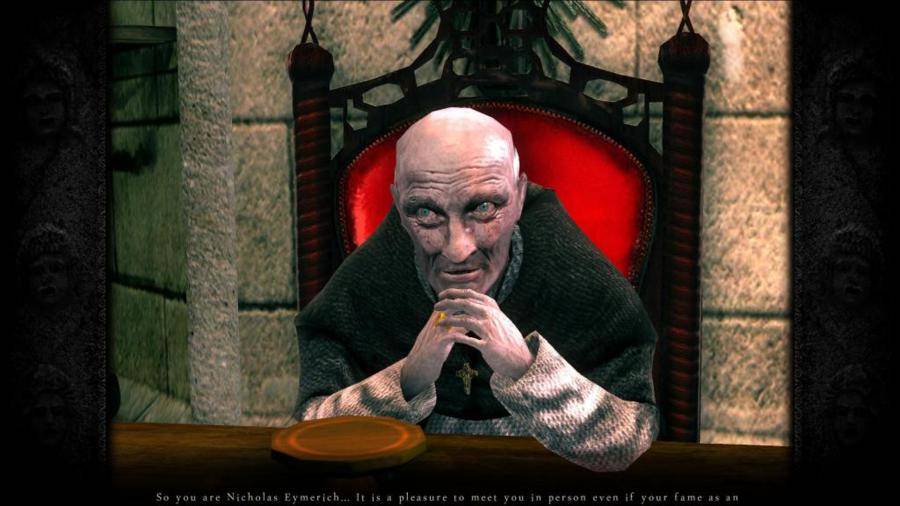
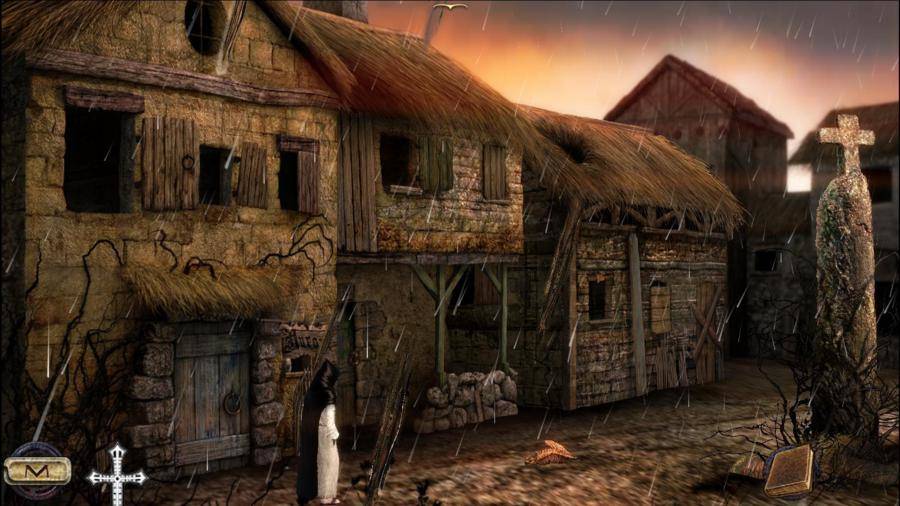
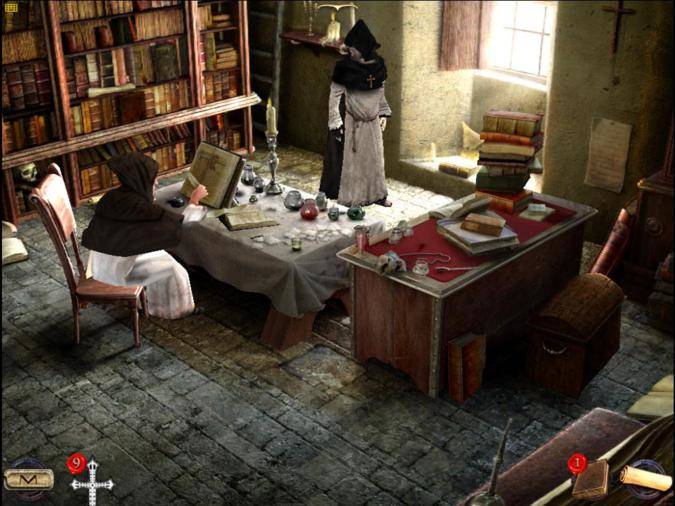
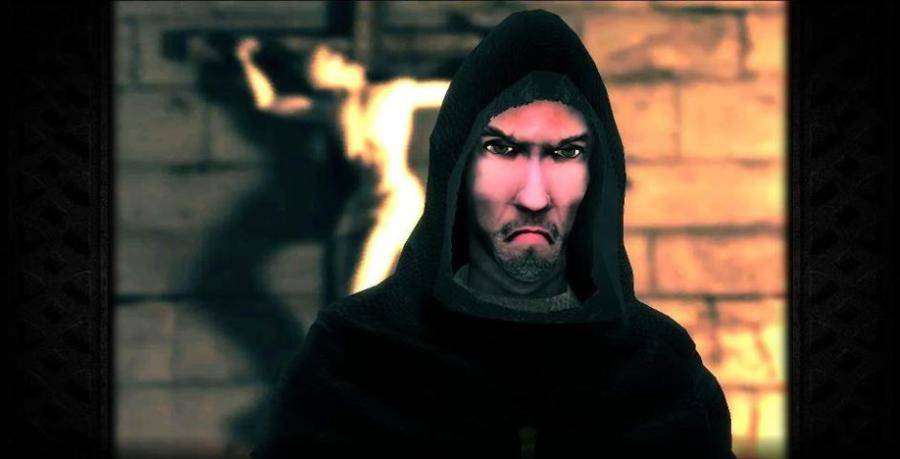
- 1
- 2
- 3
- 4
Where’s the fun, though, when that adventure is blocked by fetch quests, stone collecting, random guesses and time-specific conversations. This happens in The Plague. You’re told the story, and then you walk around for an hour in a monastery just because Eymerich doesn’t entirely trust the people around him. It ends up leading to revelations that influence the plot, but it feels so slow, so random in its puzzles, that you don’t end up feeling it’s worth it.
Point and Click
In terms of gameplay, The Inquisitor does exactly what it says on the tin. It’s a point and click adventure in the most specific of senses. Blocks of dialogue are followed by pixel counting, followed by slight confusion, followed by another block of dialogue.
For over twenty years, this has been a proven gaming formula. With the right sort of characterisation, it can result in one of the best sorts of titles, one that will be remembered for years to come.
The Inquisitor gets it wrong on three counts. The characters are largely dull (and the voice acting patently terrible), the puzzles are pulled out of nowhere and even collecting items is strangely frustrating.
Eymerich is probably the strongest of the characters. With his forceful opinions, terrible attitude and not always pure intentions, he seems just a rewrite or two away from being immensely likeable, in an unlikeable sort of way. It’s also incredibly fresh to play a point and click game (or any game really) where the lead character is something of an asshole.
The problem is, you just won’t care. Eymerich is delivered in such a way that there’s just no real redeeming quality. You dislike his beliefs. You dislike how he treats people. Even his voice actor ends up being a source of annoyance (although that’d be the case regardless).
This results in a character that you’d like to like, just a little bit, but don’t.
The rest of the cast is forgettable and largely either the result of some puzzle – “we need a guy to act suspicious about this problem who just how will the player know that that strange locked chest is an item of interest?” – or has a single line that repeats time and again. Their voice work is even worse than Eymerich’s.
As character-driven as point and click titles should be, interesting puzzles are a must. While there are a few in The Inquisitor that you’ll enjoy, most end up being completely random. One of the first has you finding circular stones and placing them into a stone statuette. Why? Because when you look at it, it tells you you can do it.
While I wouldn’t say all of the puzzles in the game are that obviously placed, it’s a common occurrence and one that makes you feel very point and click.
It doesn’t help that the items you’ll need to find anc pick up to finish these puzzles are hidden around the place so damn well. They blend in with the background, often almost perfectly. The hinder things a little more, you must also move other items out of the way to get at the things you want to pick up, and the camera is often in such a place that you can’t see it anyway.
This is why I was happy to find the hint button. The hint button basically makes your next move for you, transporting you to a new location and doing whatever you need to do to progress. It shouldn’t have to come to that, but it made the game that much more fun, and as story-based as it should have been originally.
The Inquisitor – The Plague Conclusion
The Inquisitor isn’t an especially fun game. Point and click veterans might enjoy a new sort of lead and, more broadly, a game actually set at the time of the Inquisition might appeal to history buffs who haven’t really had a fix since the Assassin’s Creed.
Despite the potential here, The Inquisitor – Book 1 lacks the originality and pacing to make it really stand out, and as you begin to get bored you’re far more likely to notice the dreadful voice acting and nonsense puzzles. By the end of this first episode, you’ll have given up any of the hope that that premise may have given you.
Unless you’re specifically interested – and perhaps even then – this is one to avoid.
Positives
- A dark, angry lead, although perhaps too angry
- An interesting setting and premise
Negatives
- The voice acting is, at its worse, atrocious
- Puzzles are randomly placed and not fun to solve
- Most characters are completely forgettable
- The pacing is way too slow



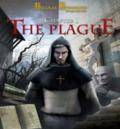
 Mat Growcott has been a long-time member of the gaming press. He's written two books and a web series, and doesn't have nearly enough time to play the games he writes about.
Mat Growcott has been a long-time member of the gaming press. He's written two books and a web series, and doesn't have nearly enough time to play the games he writes about.